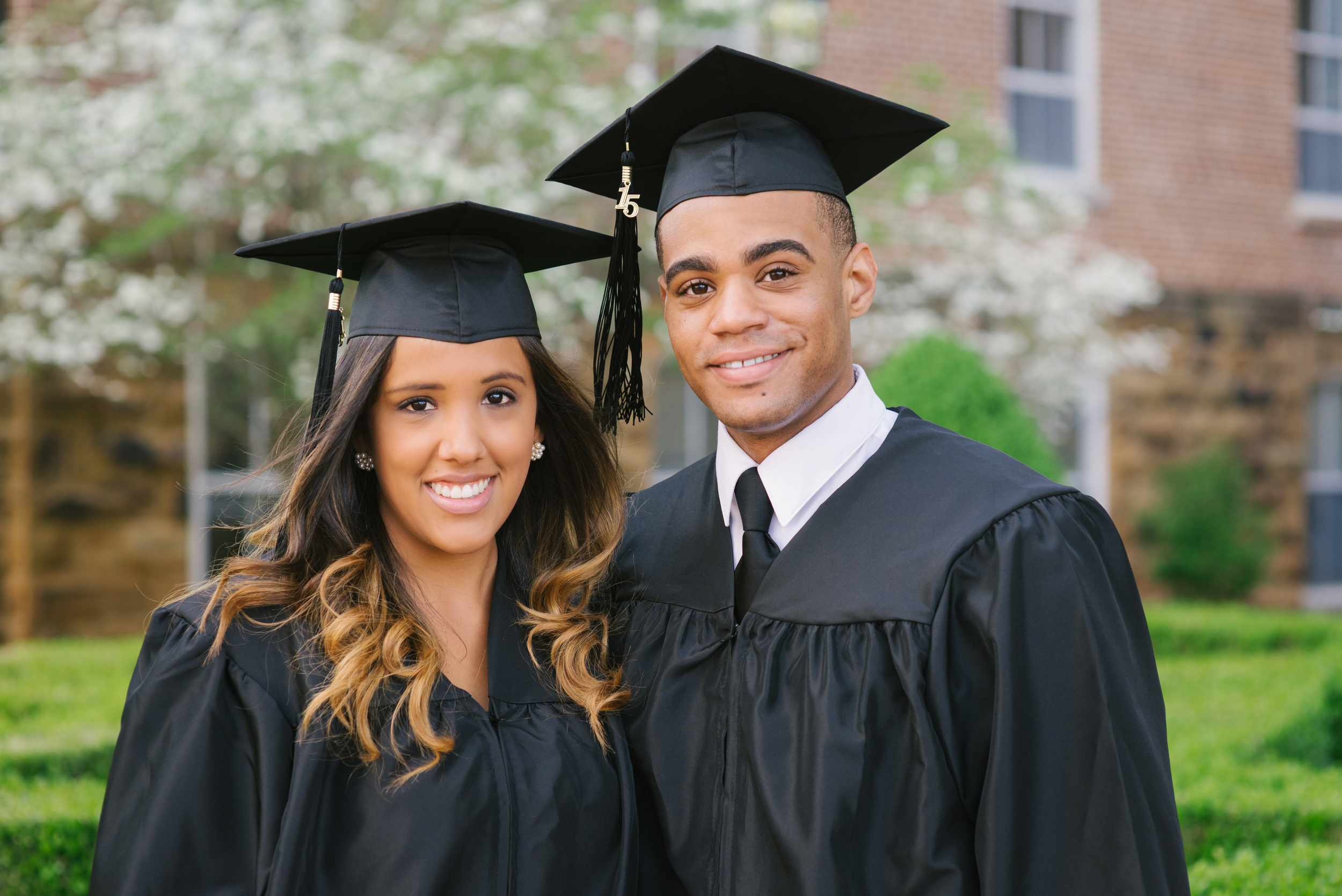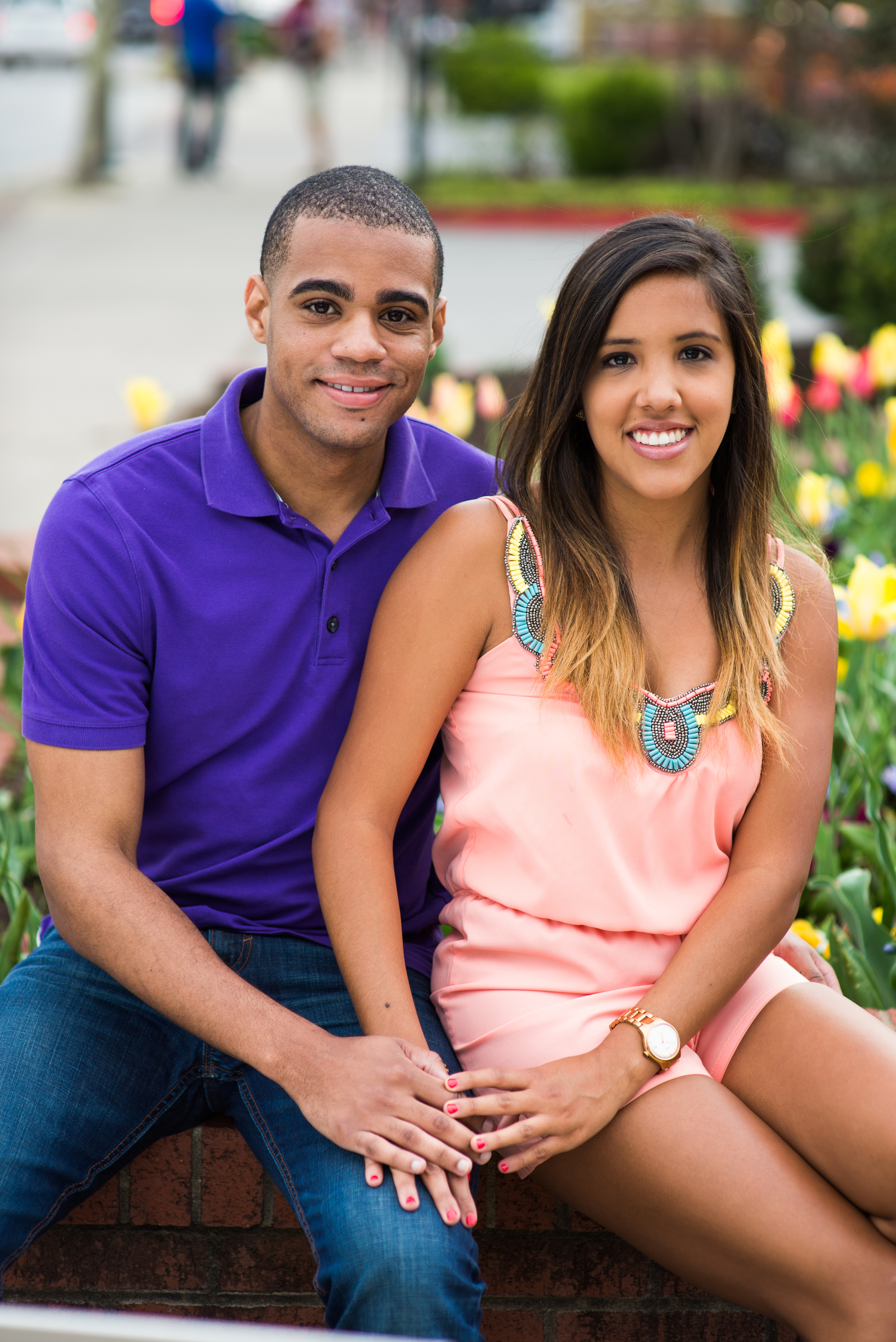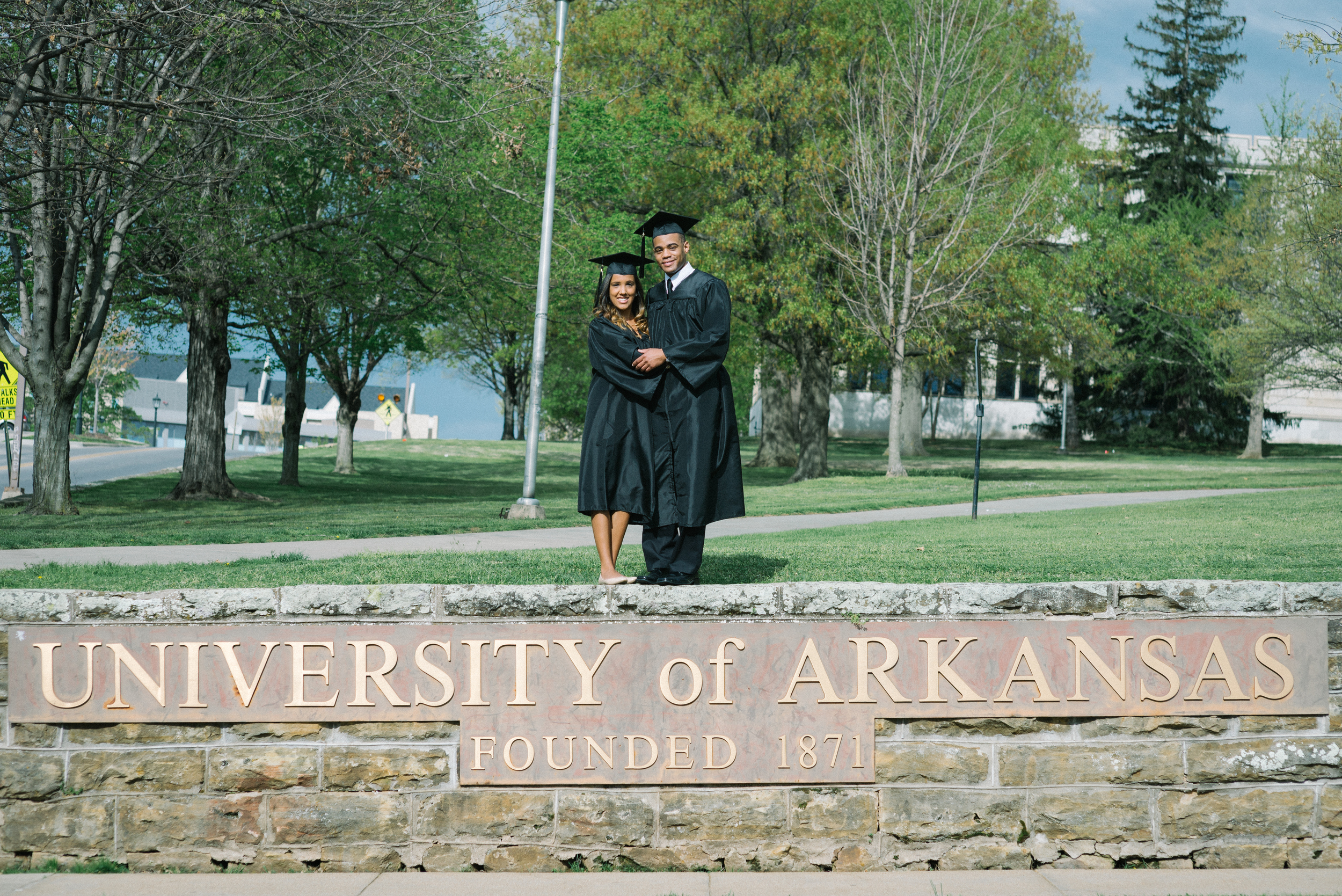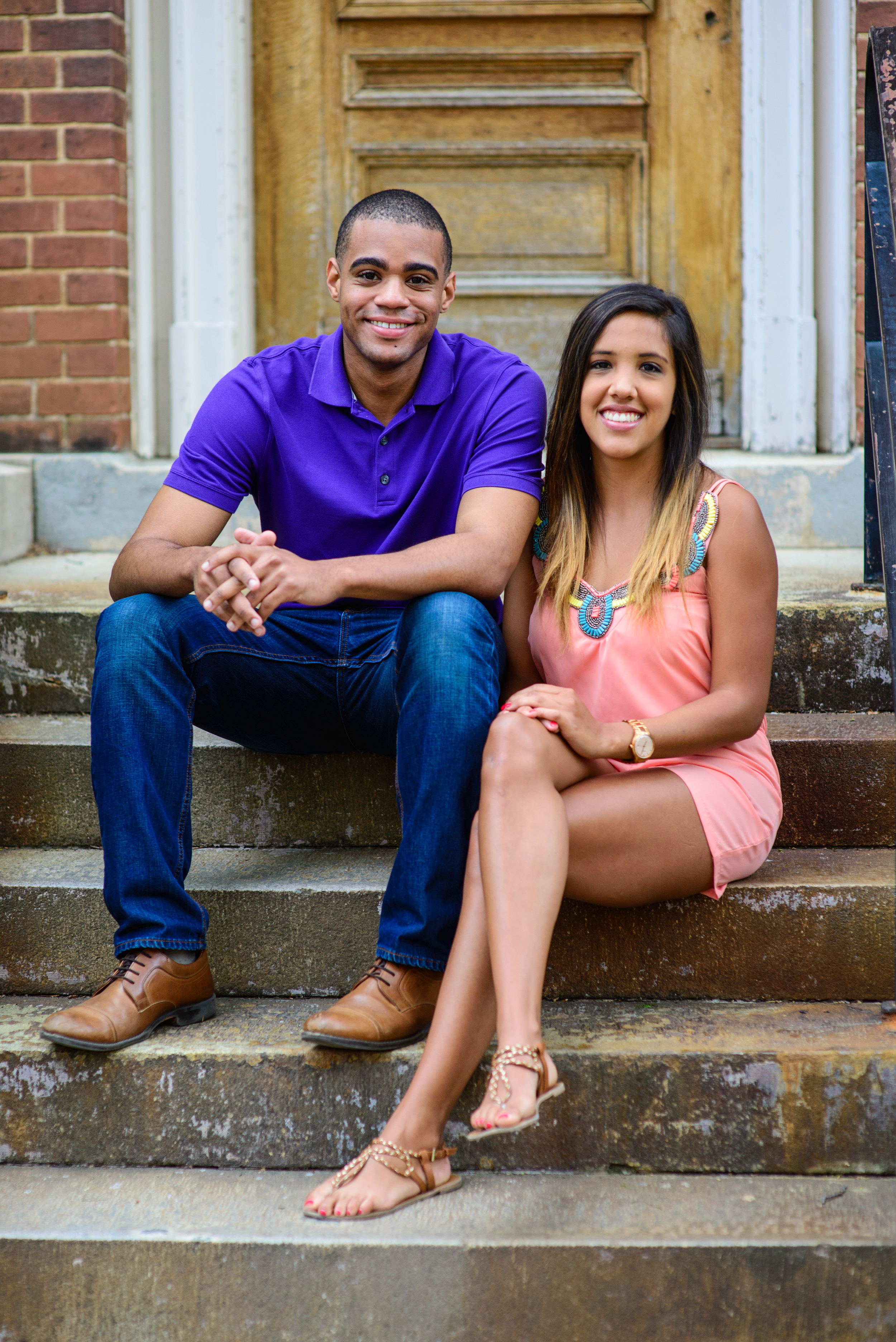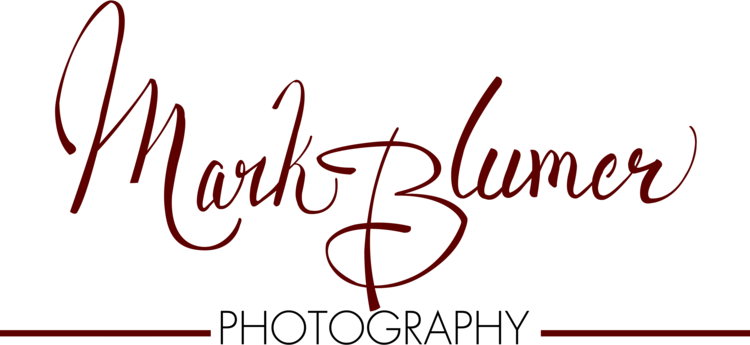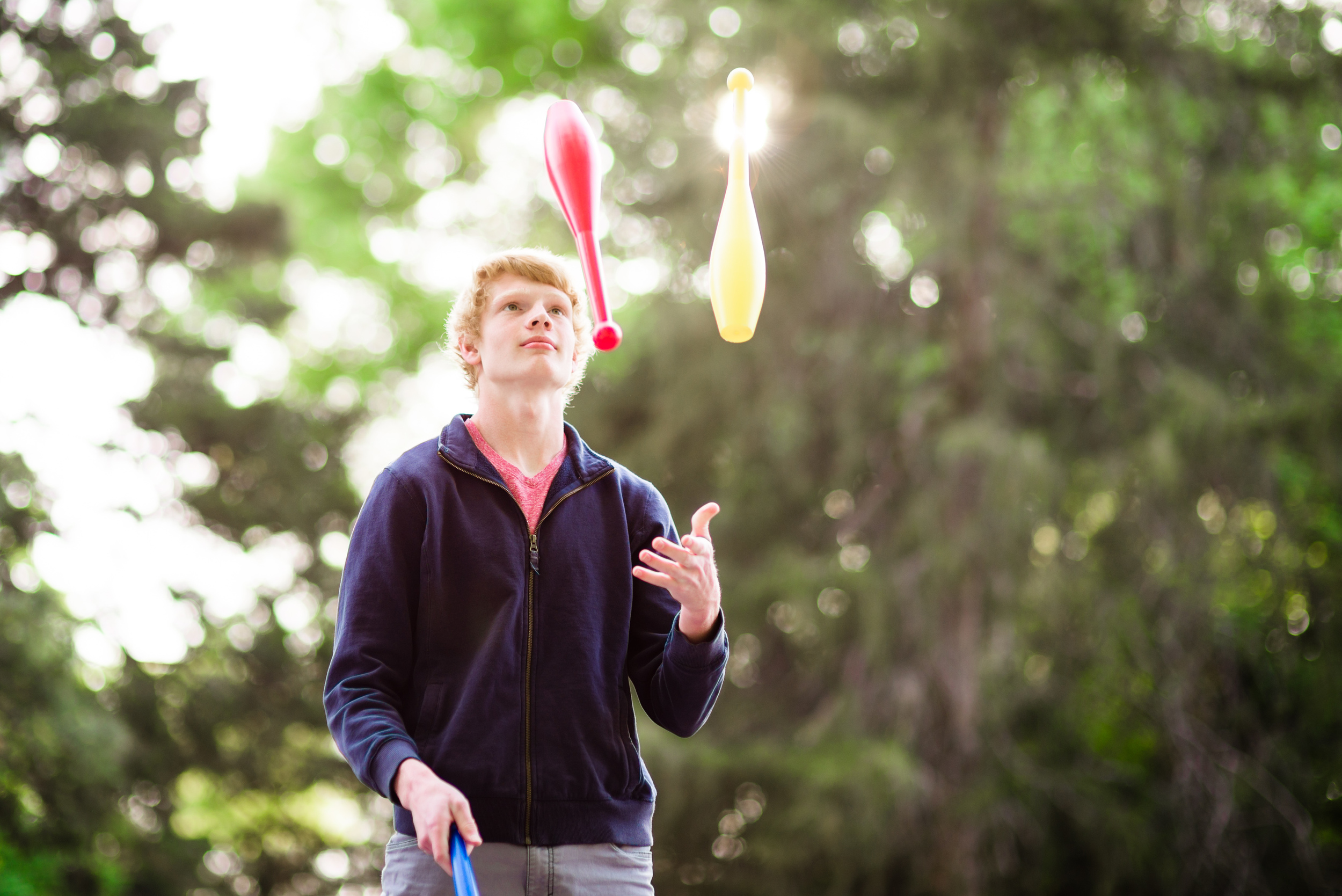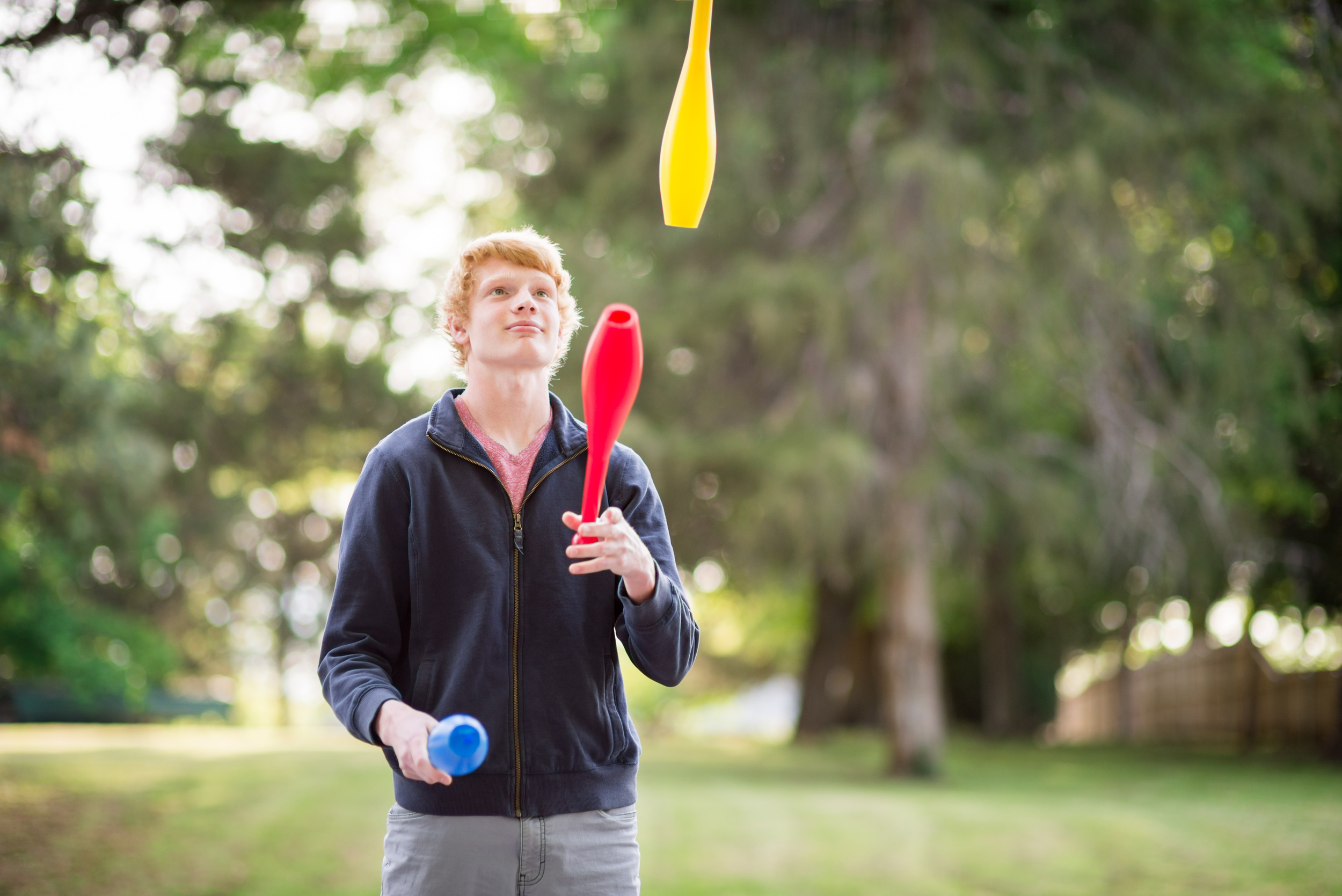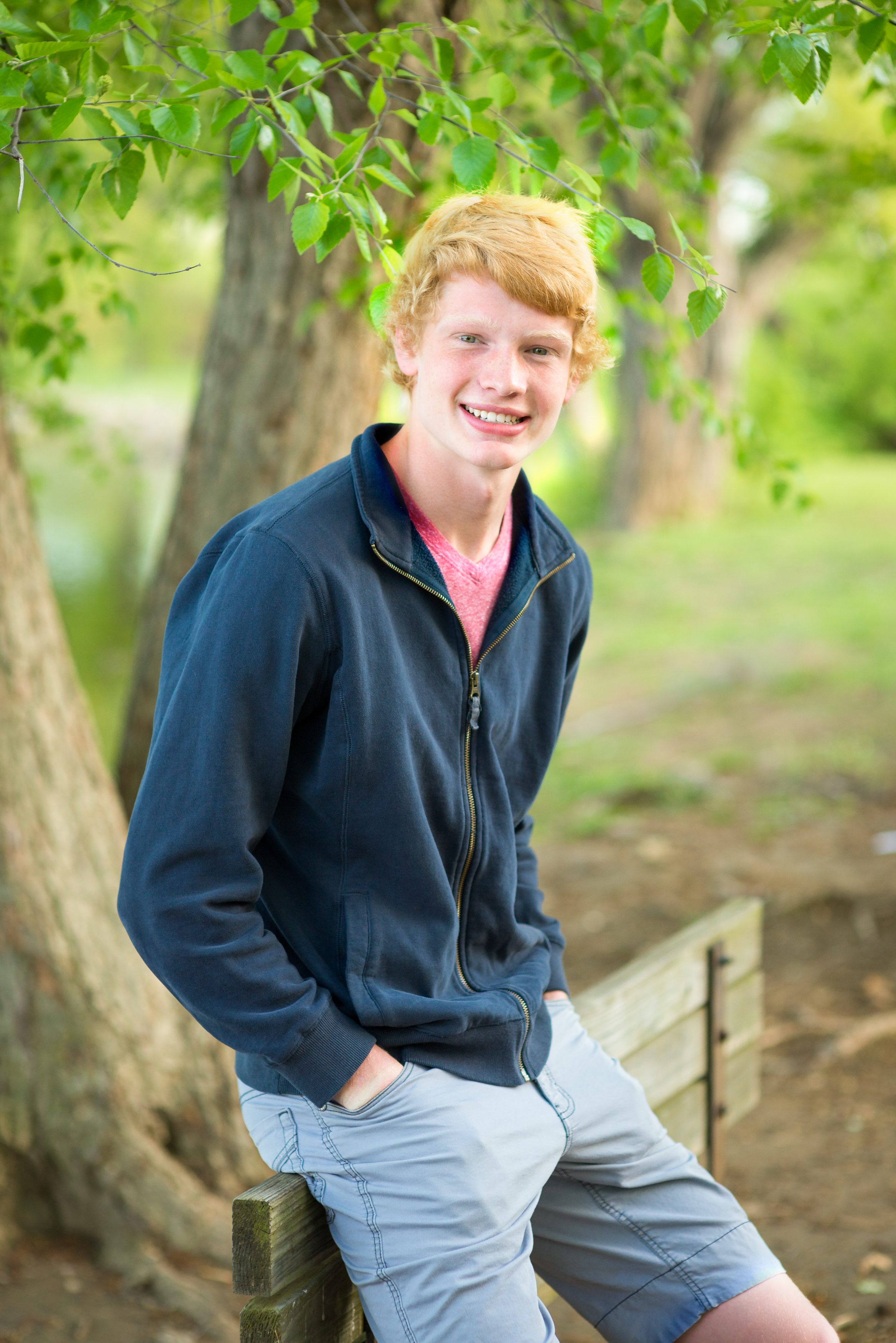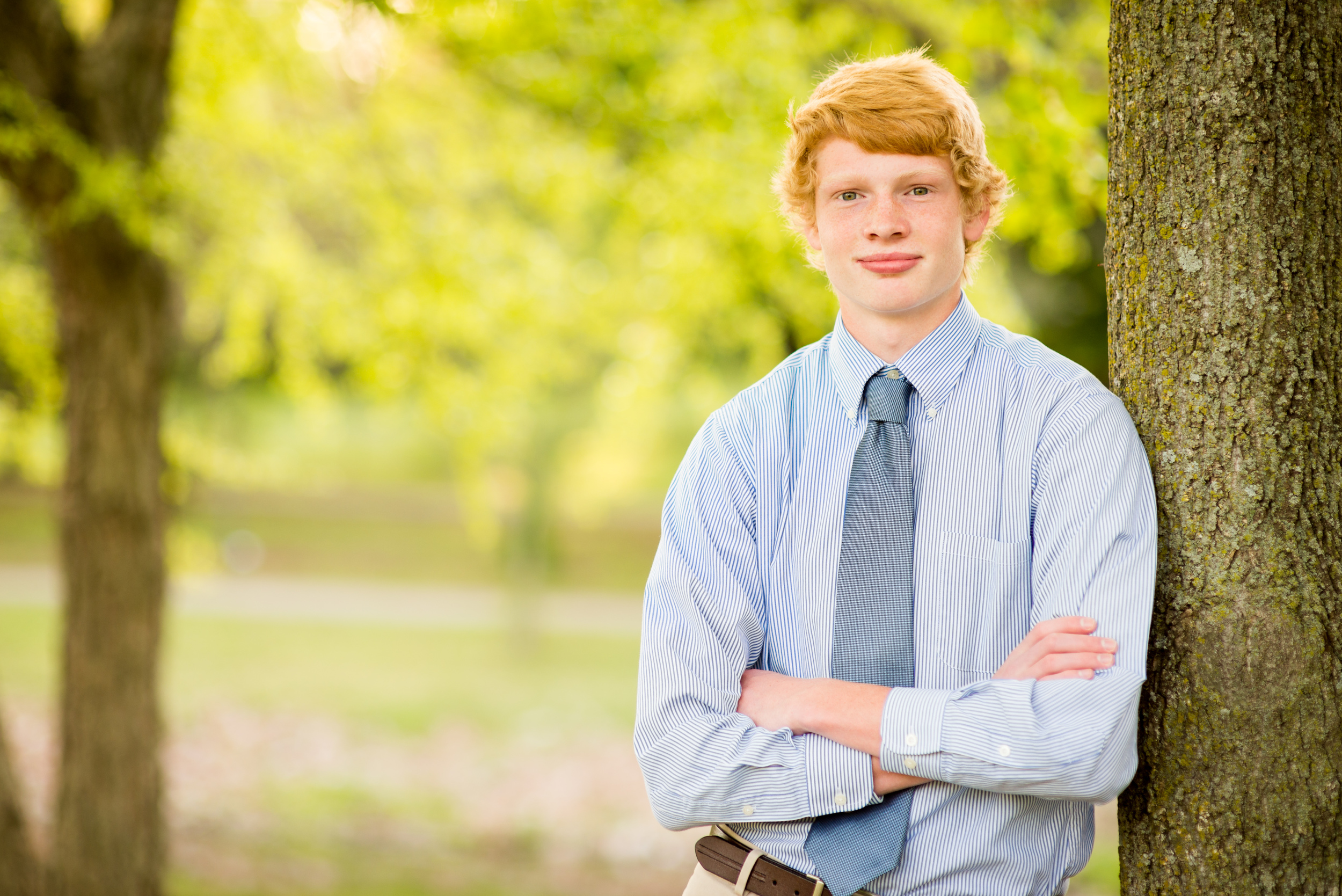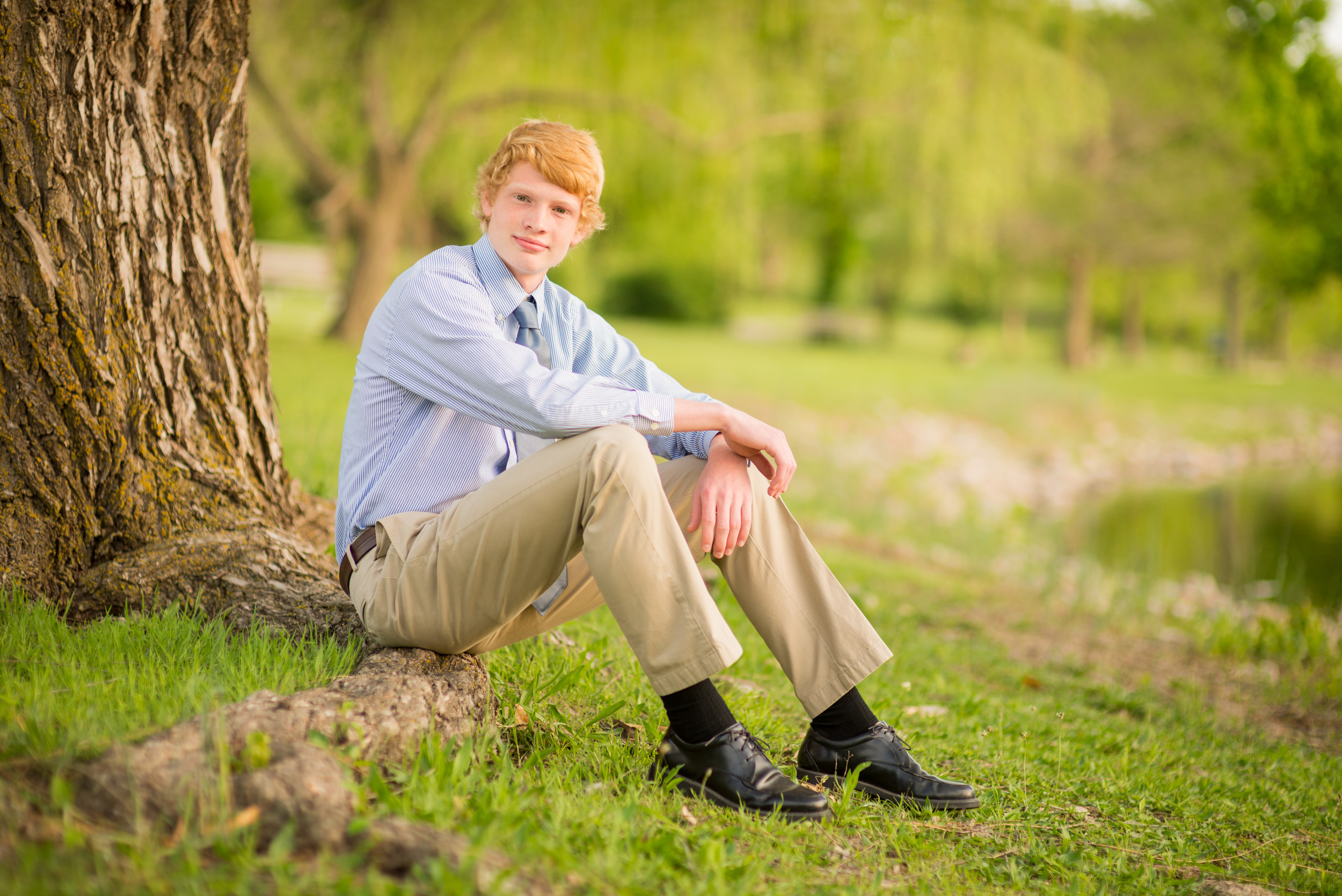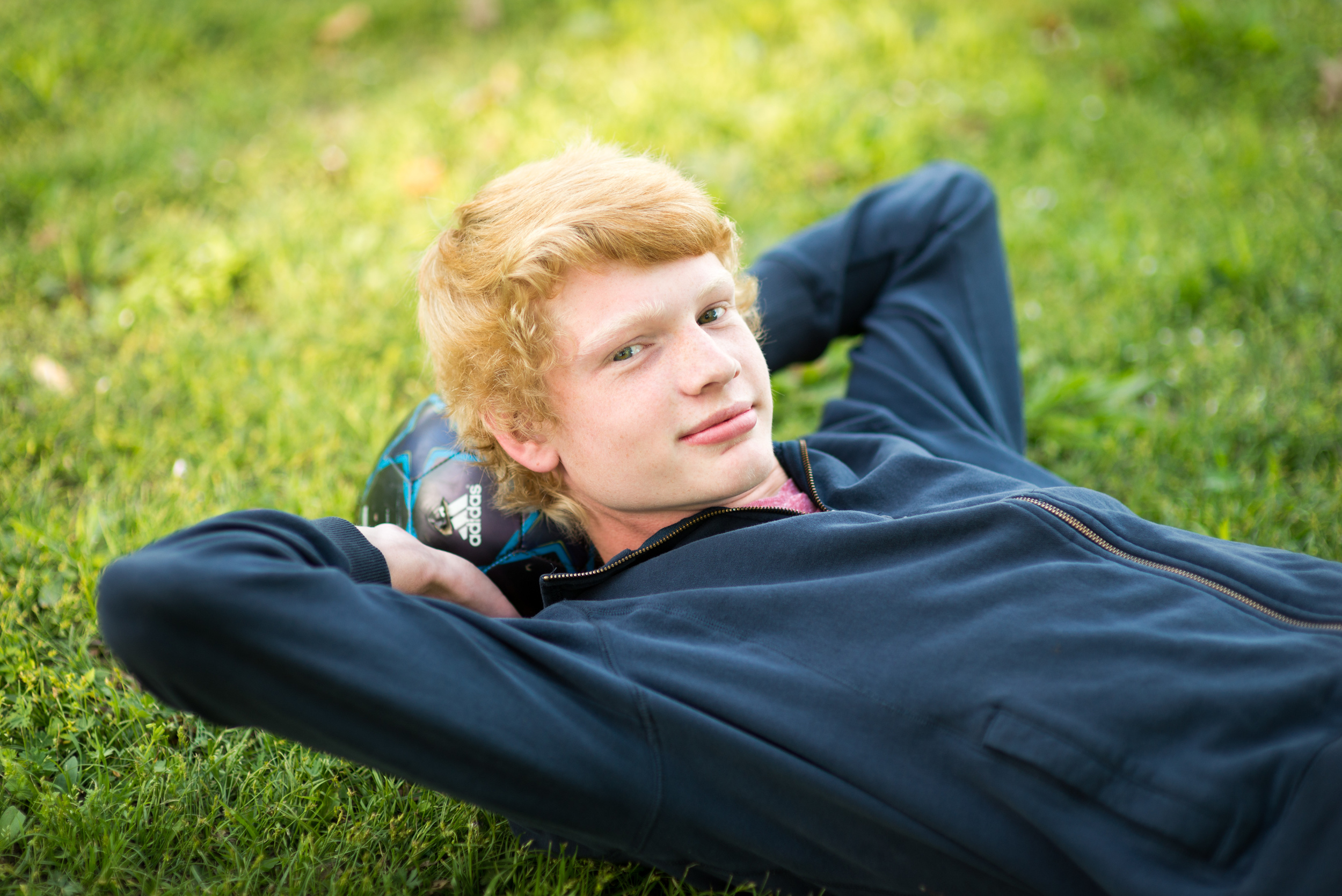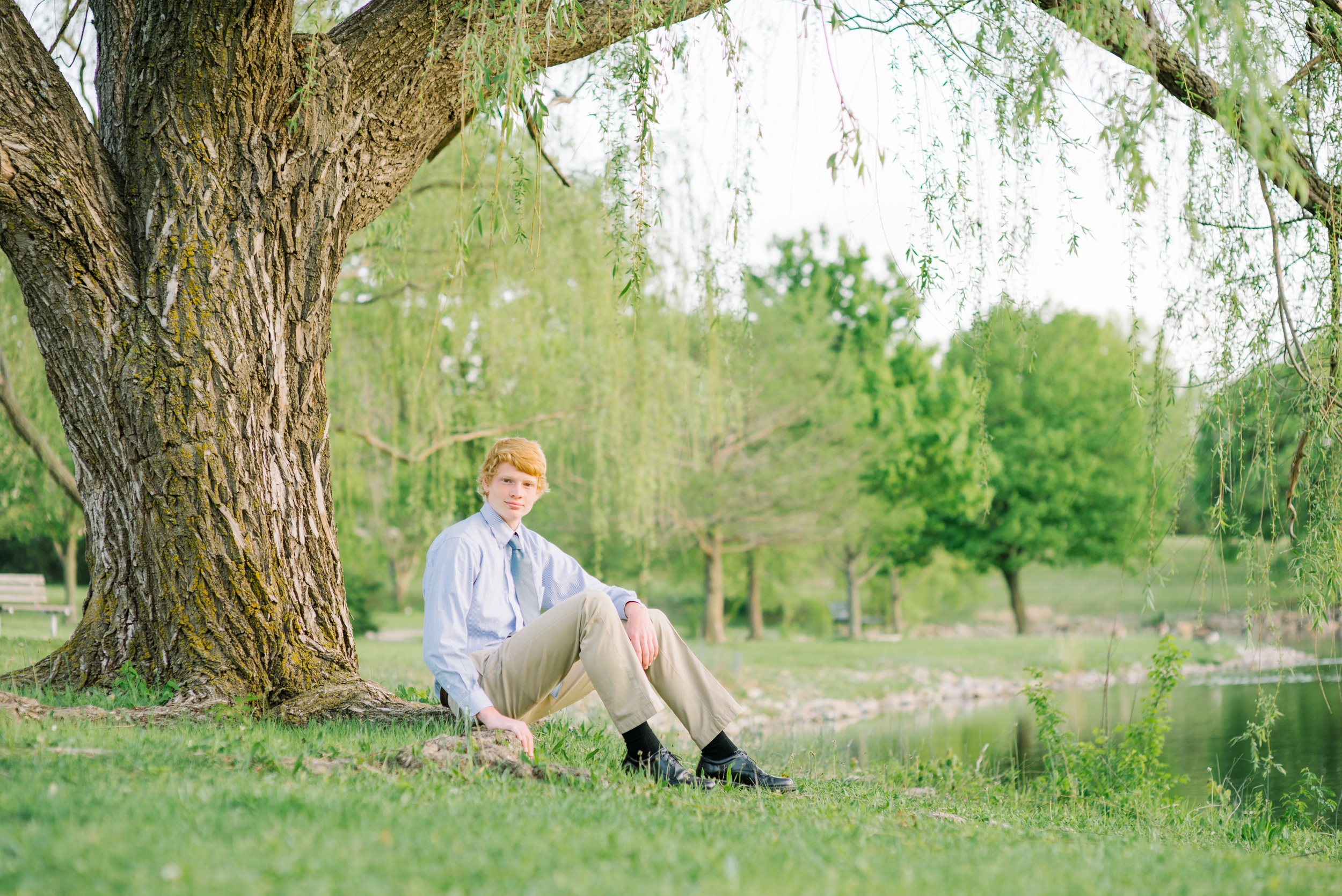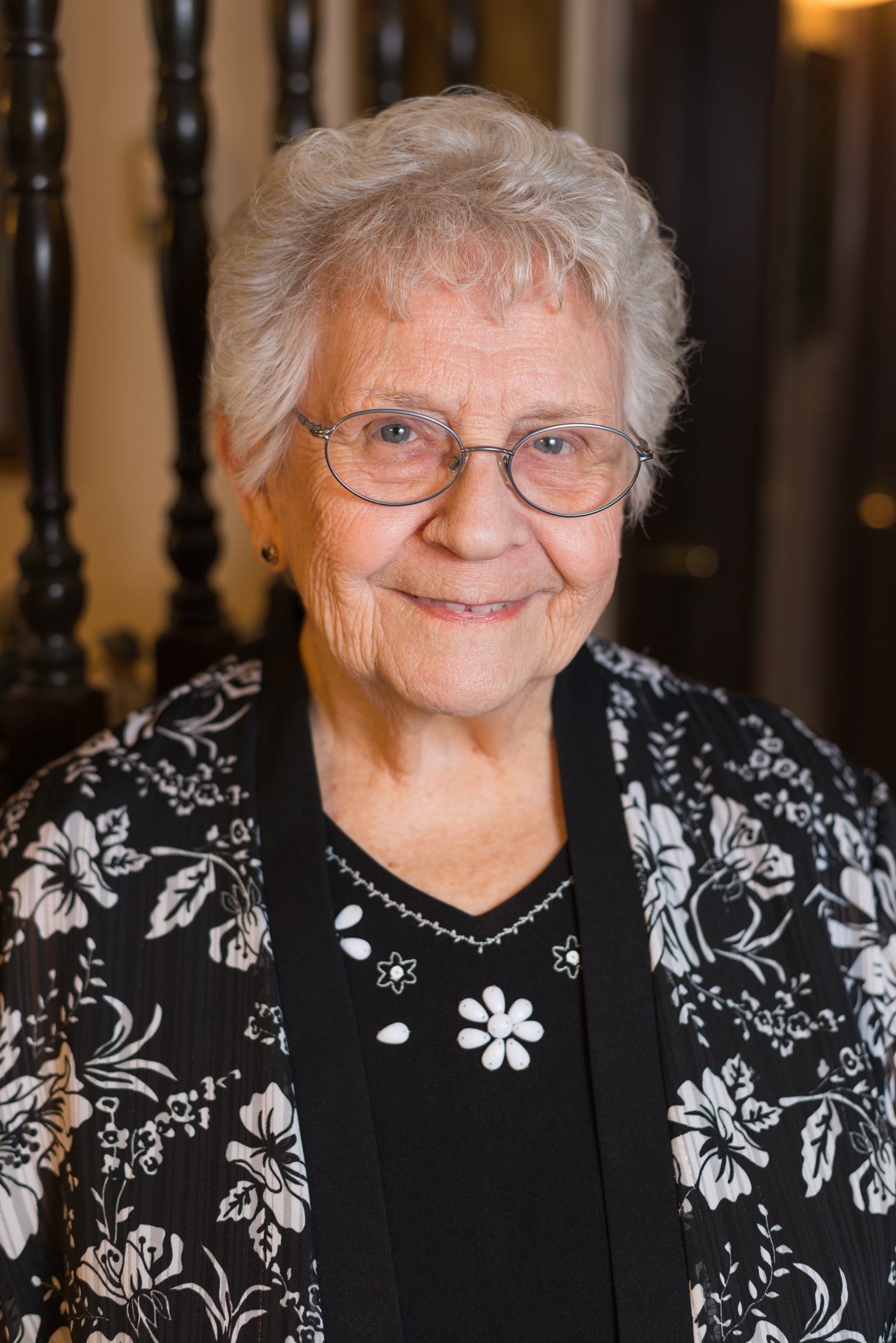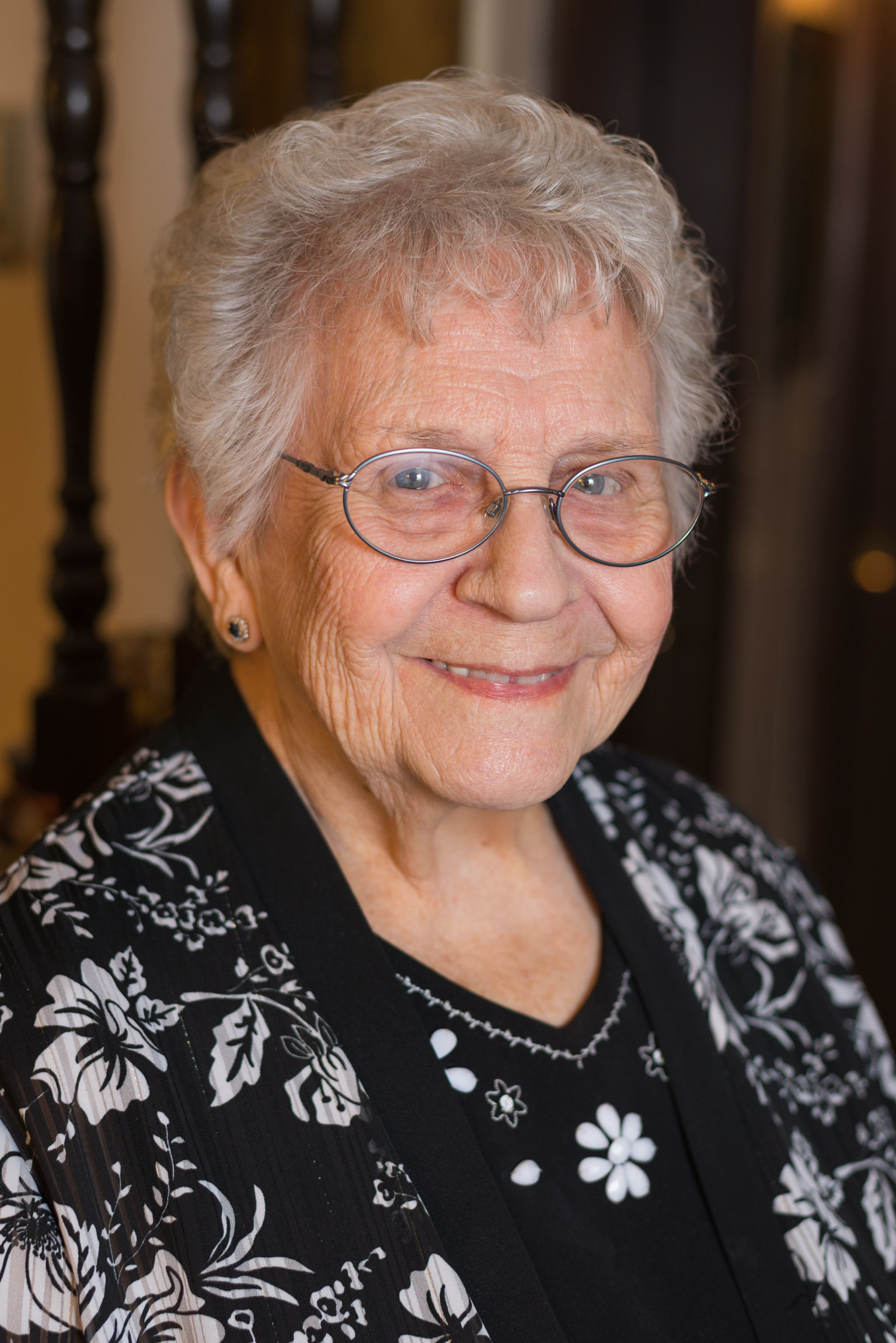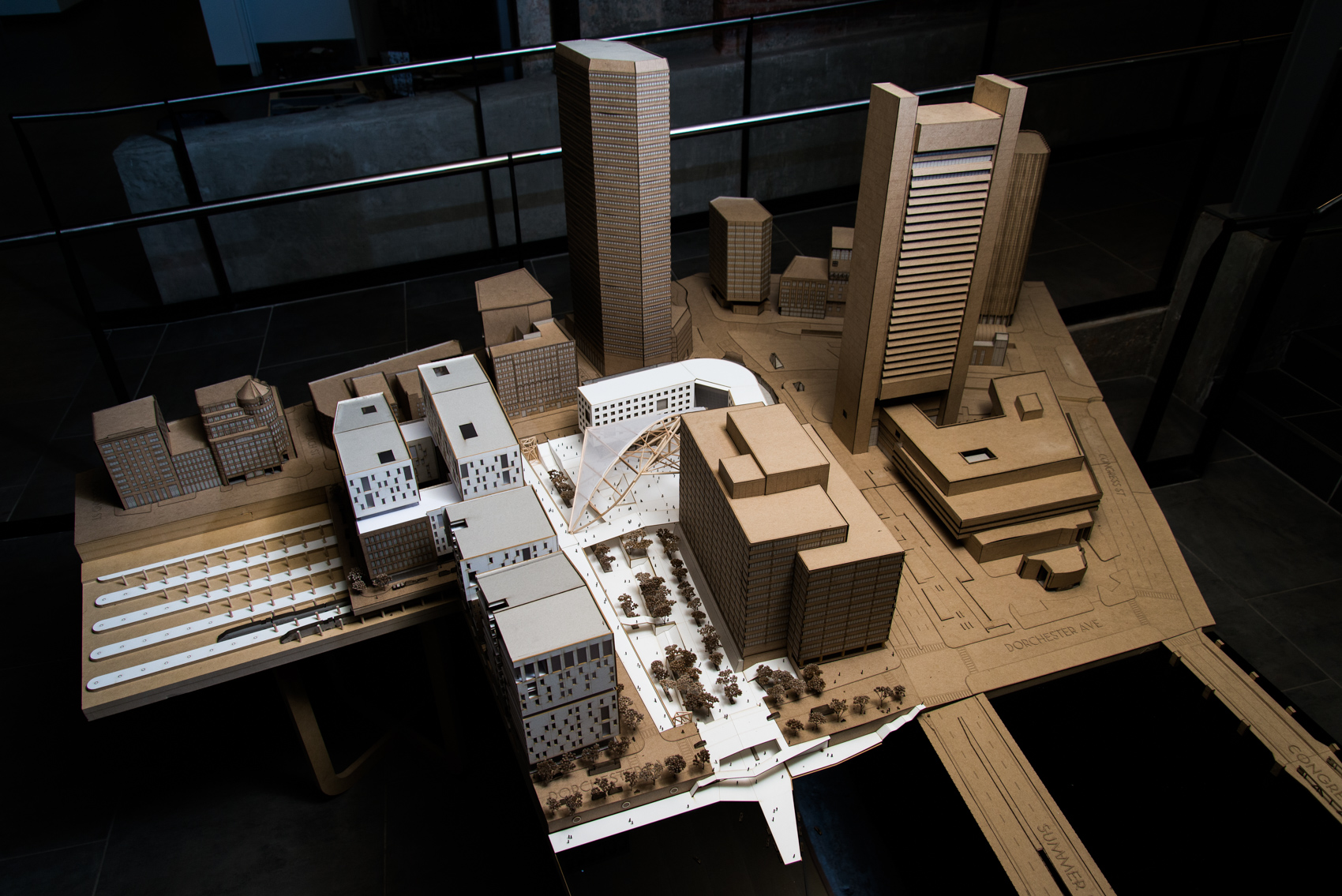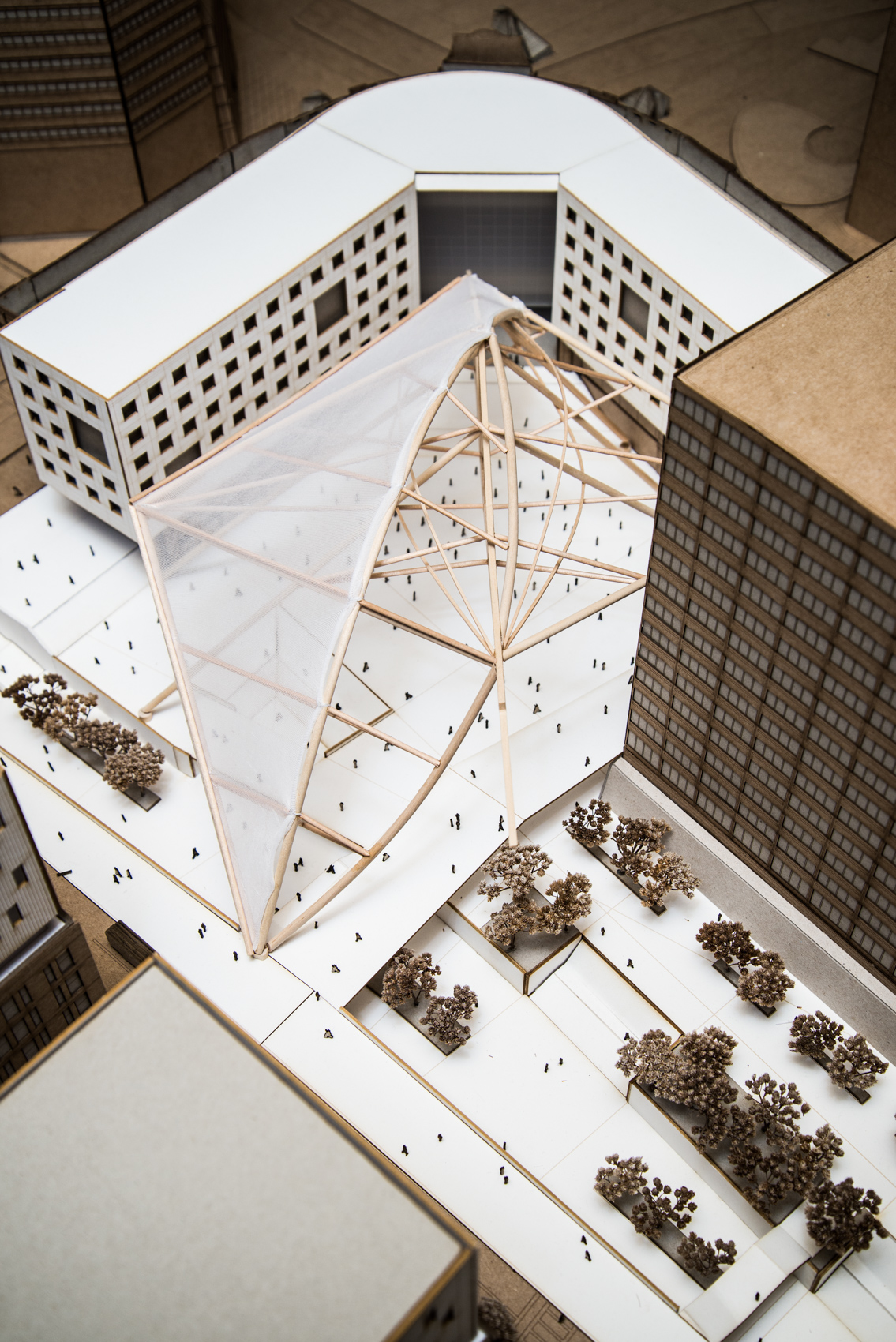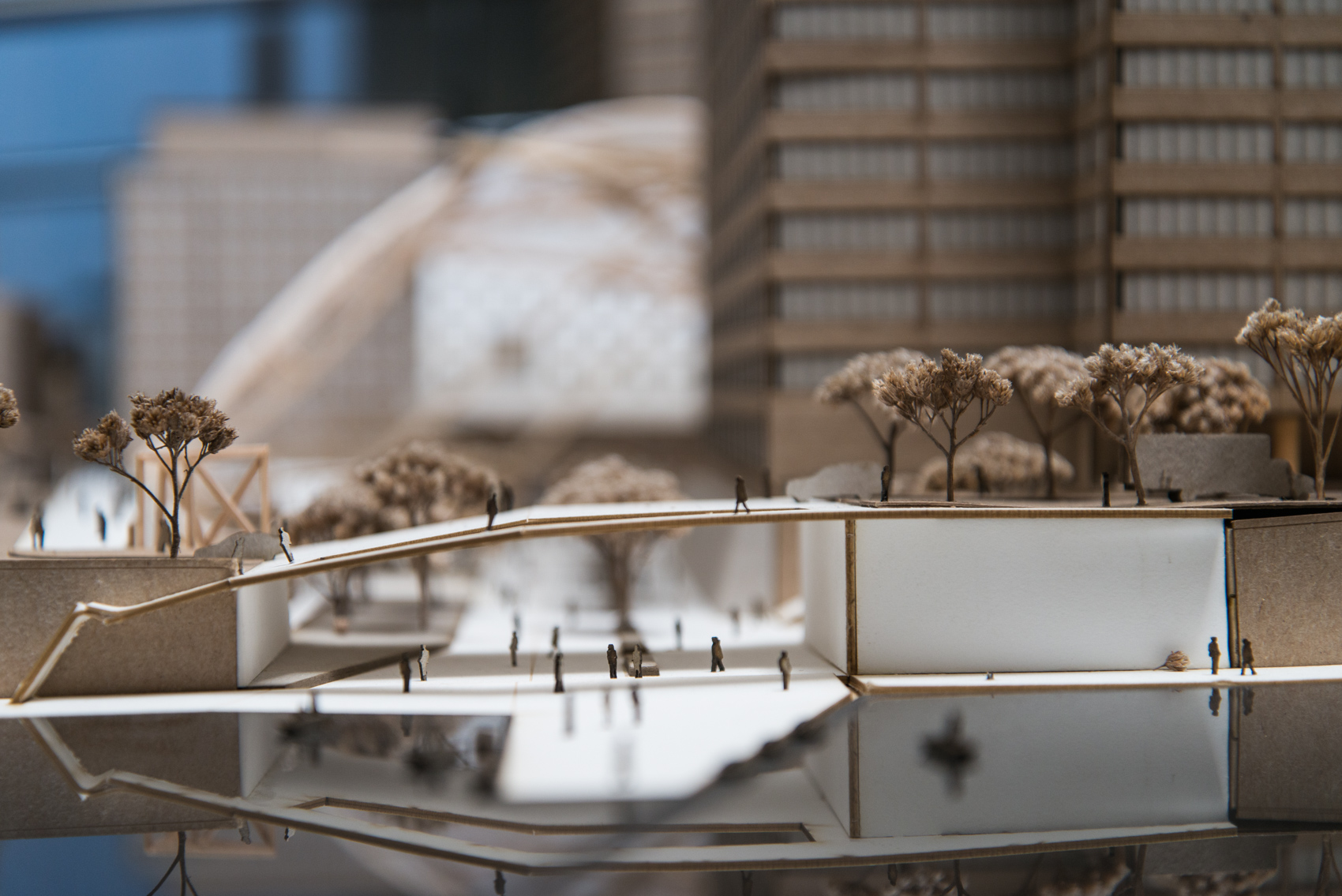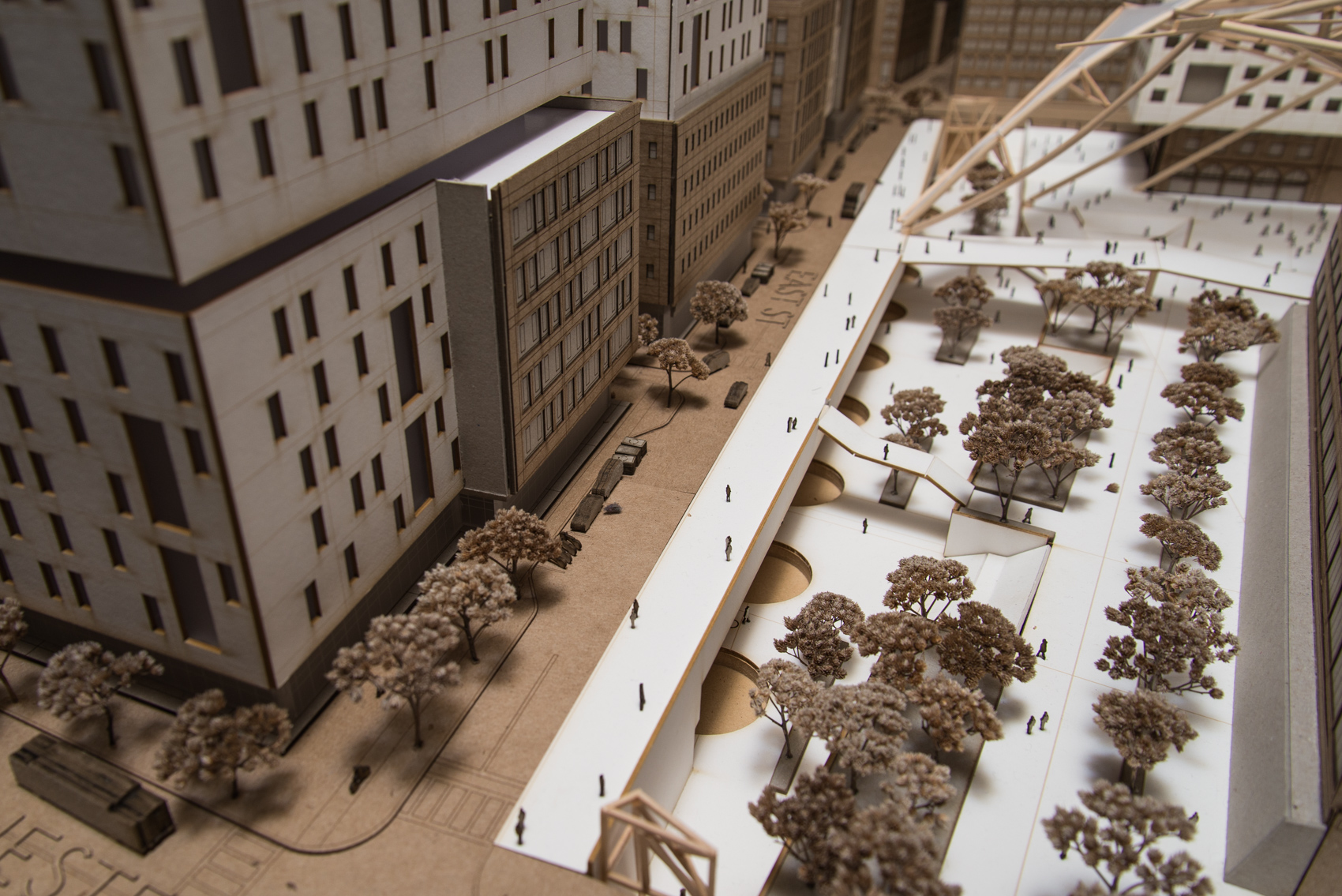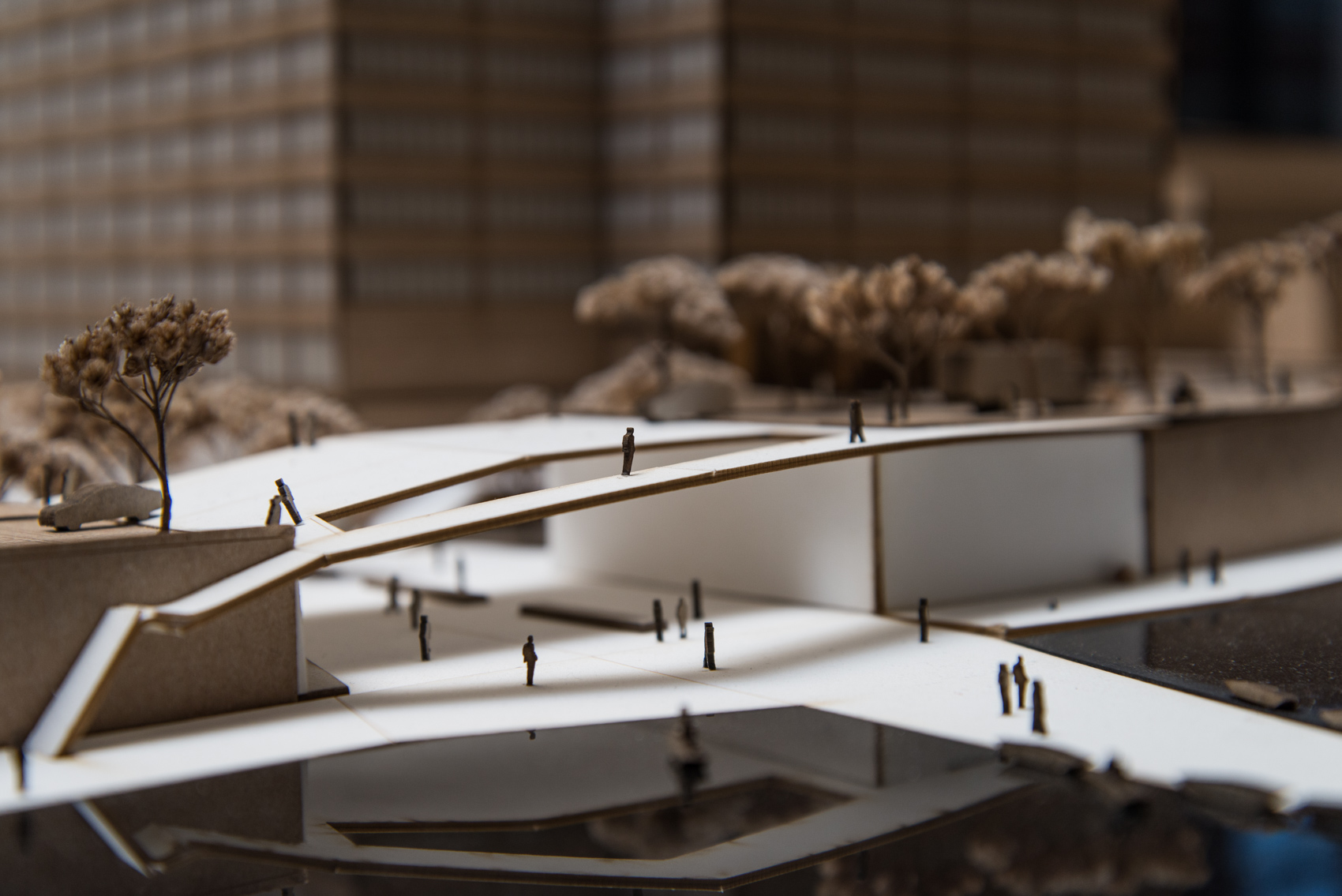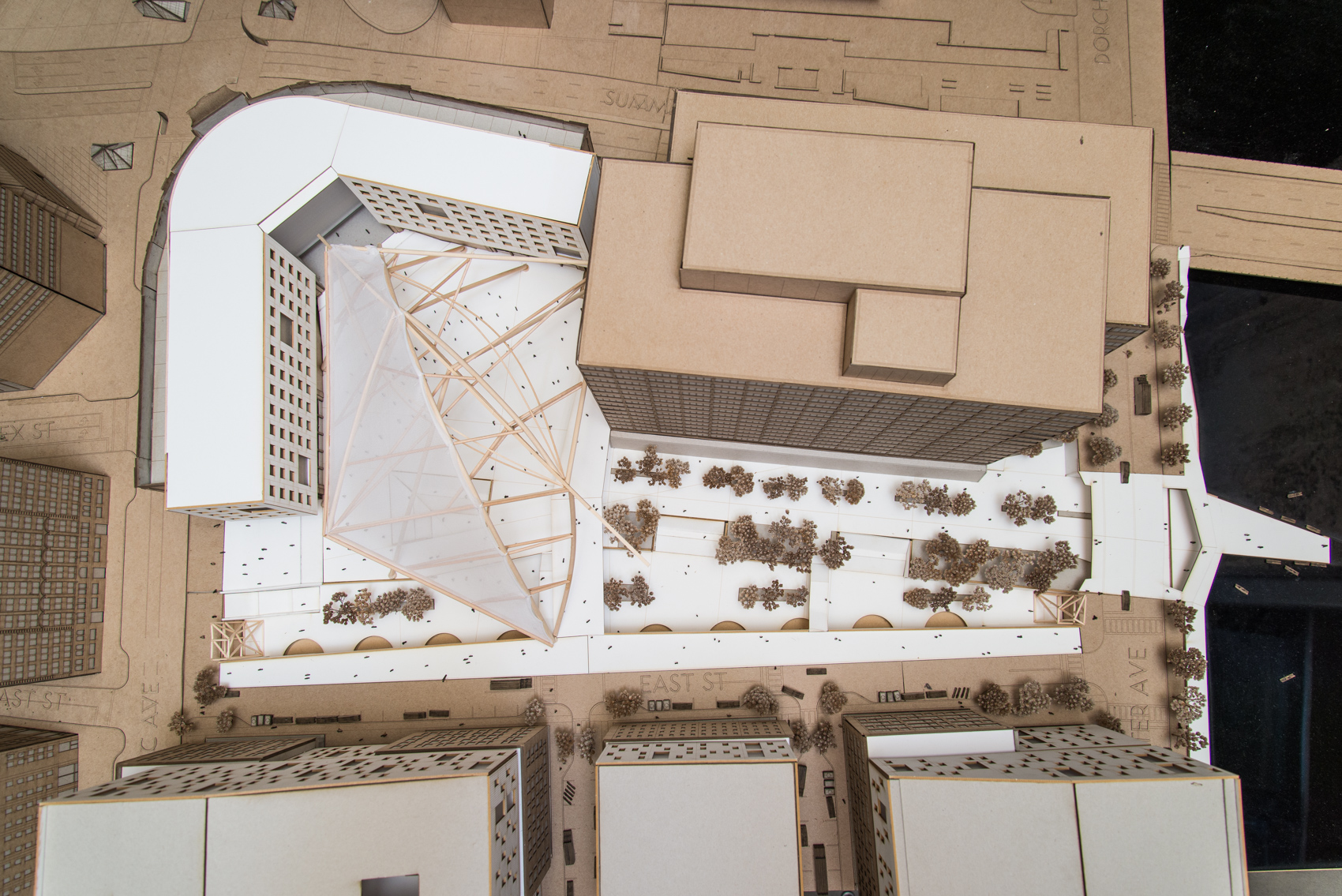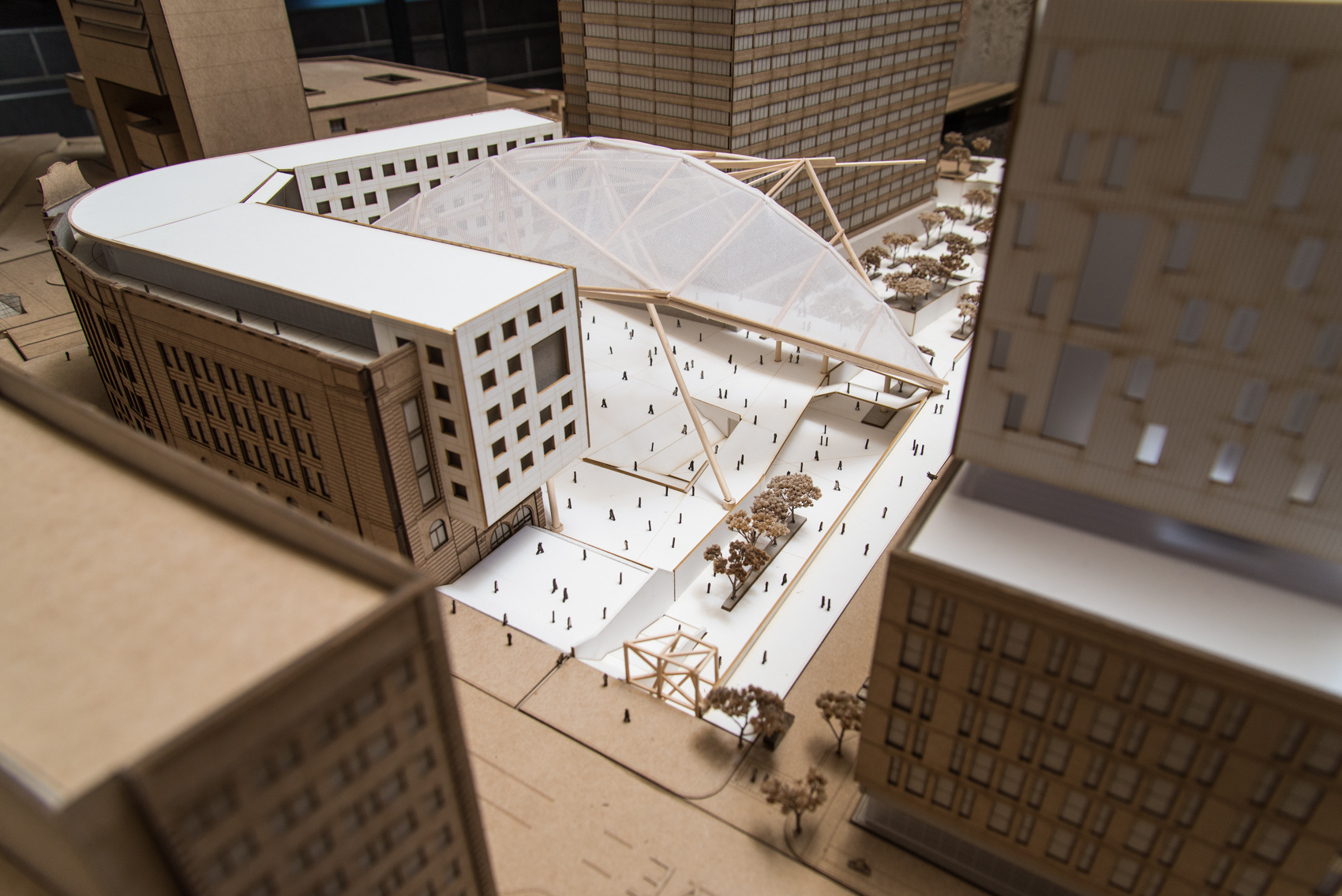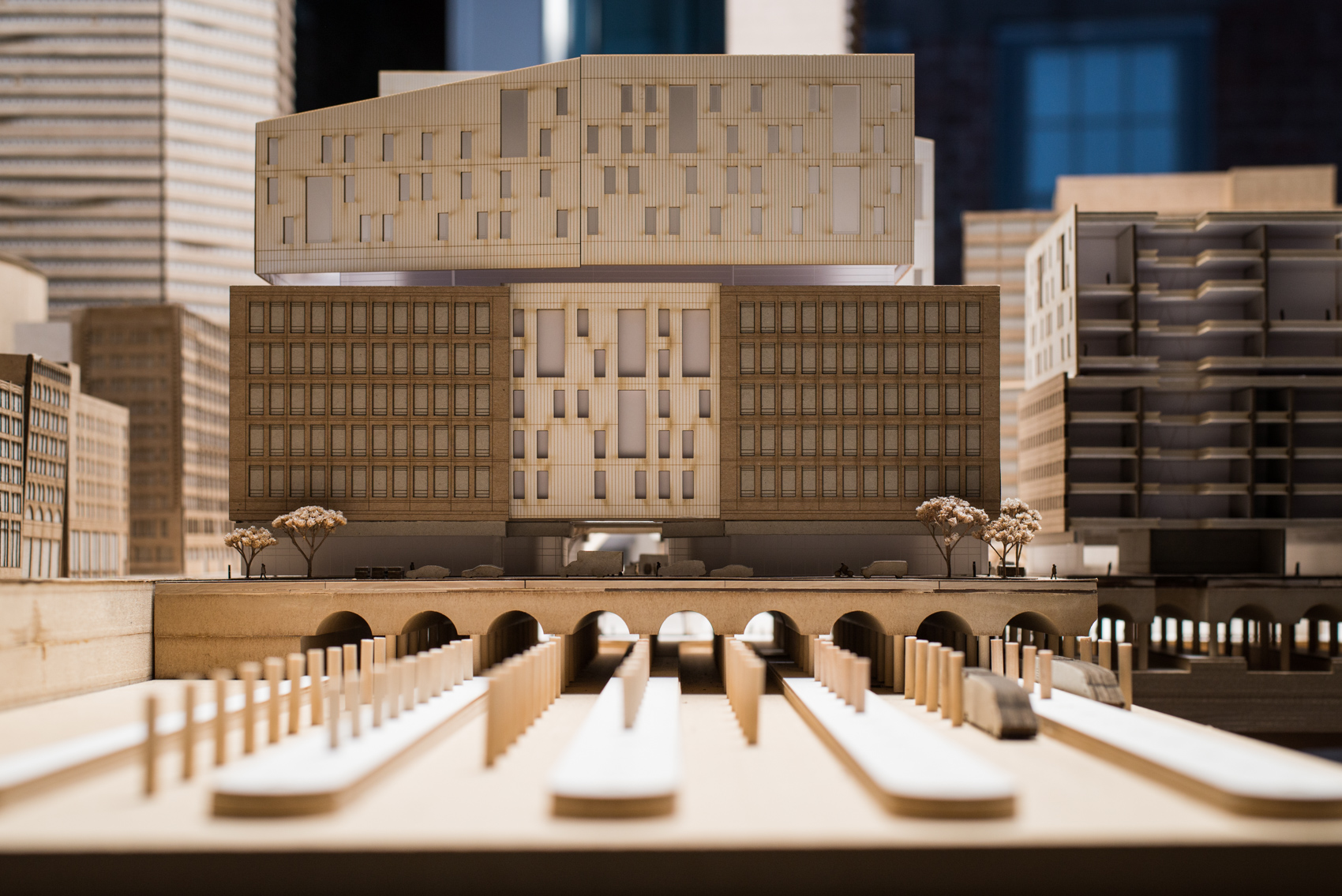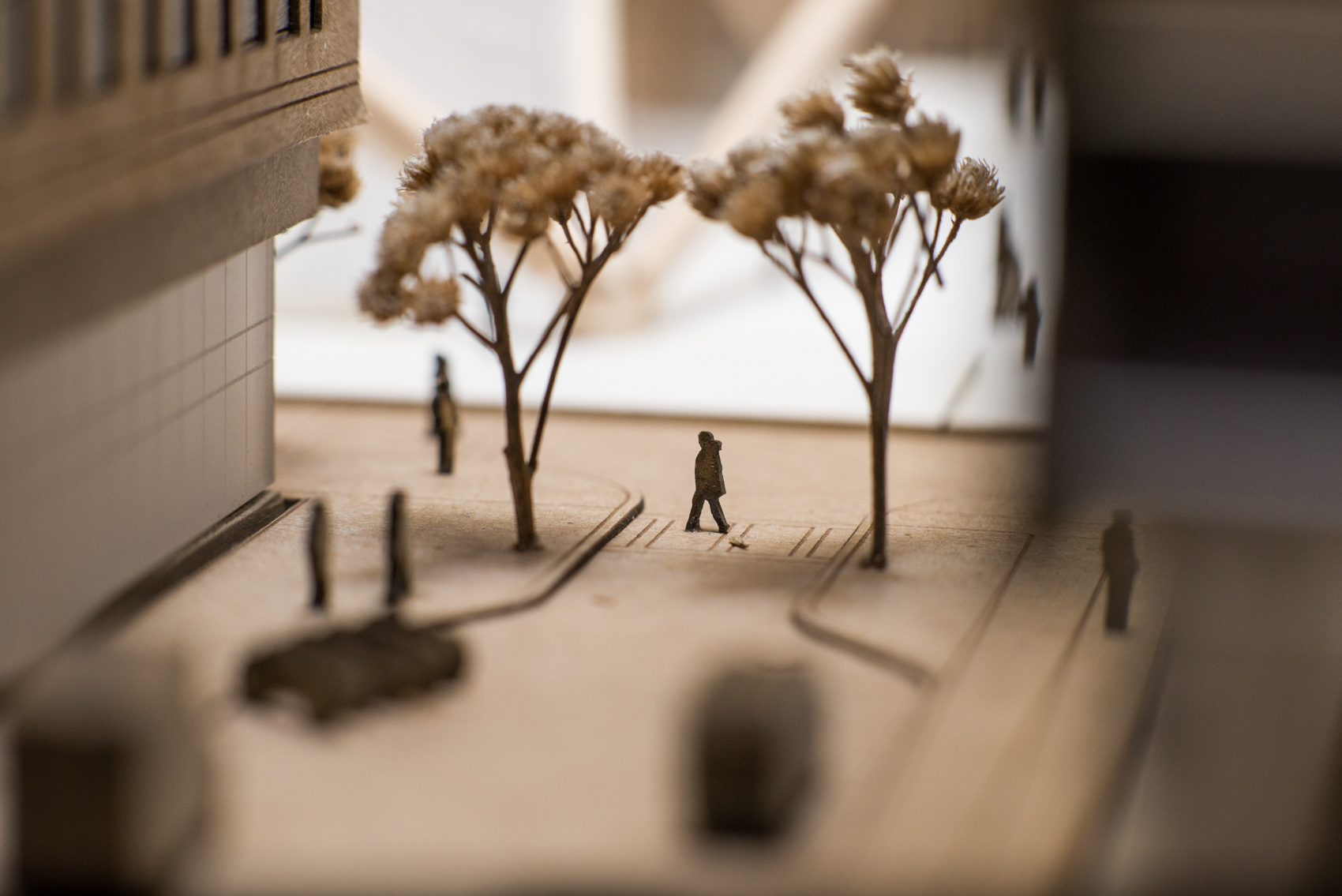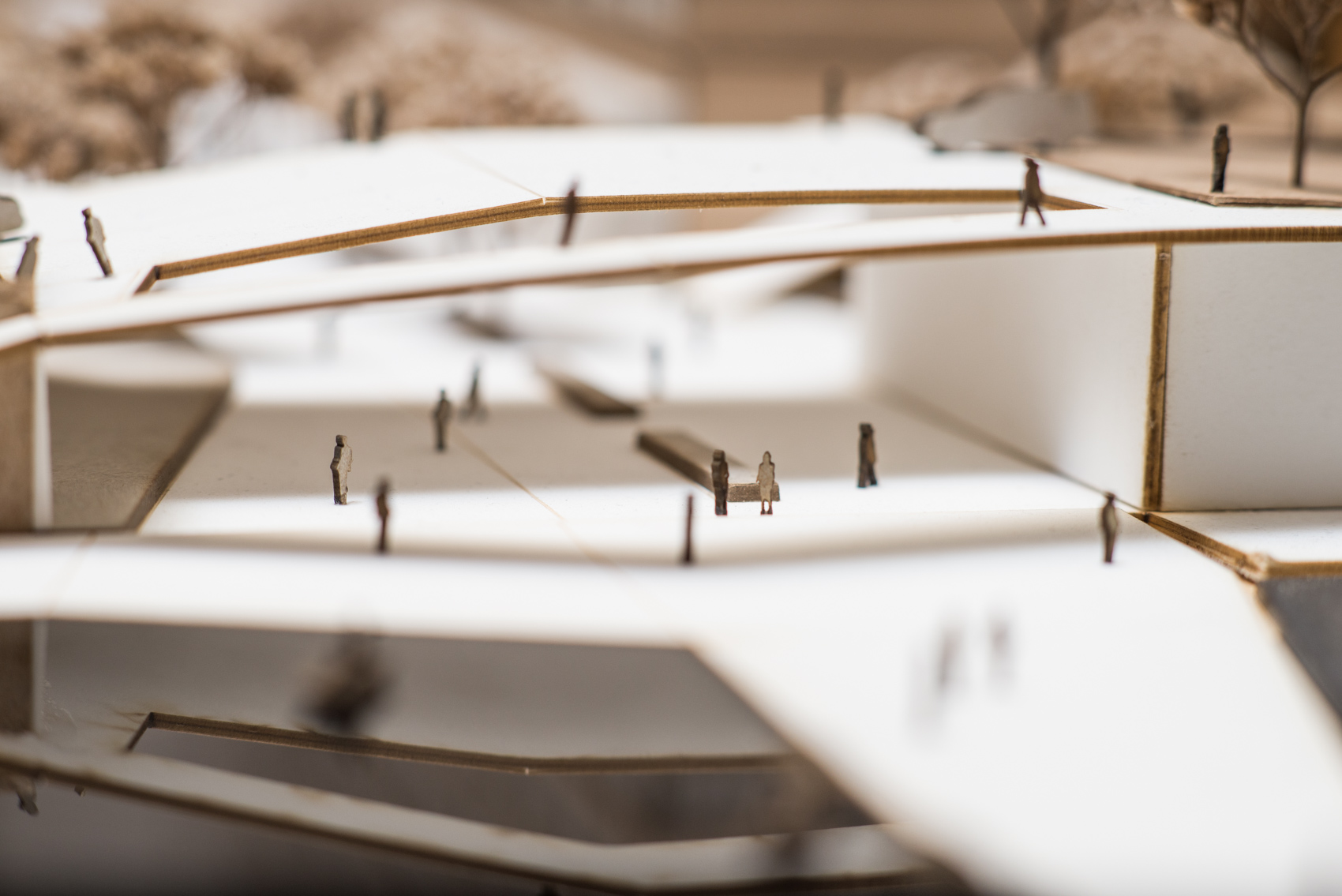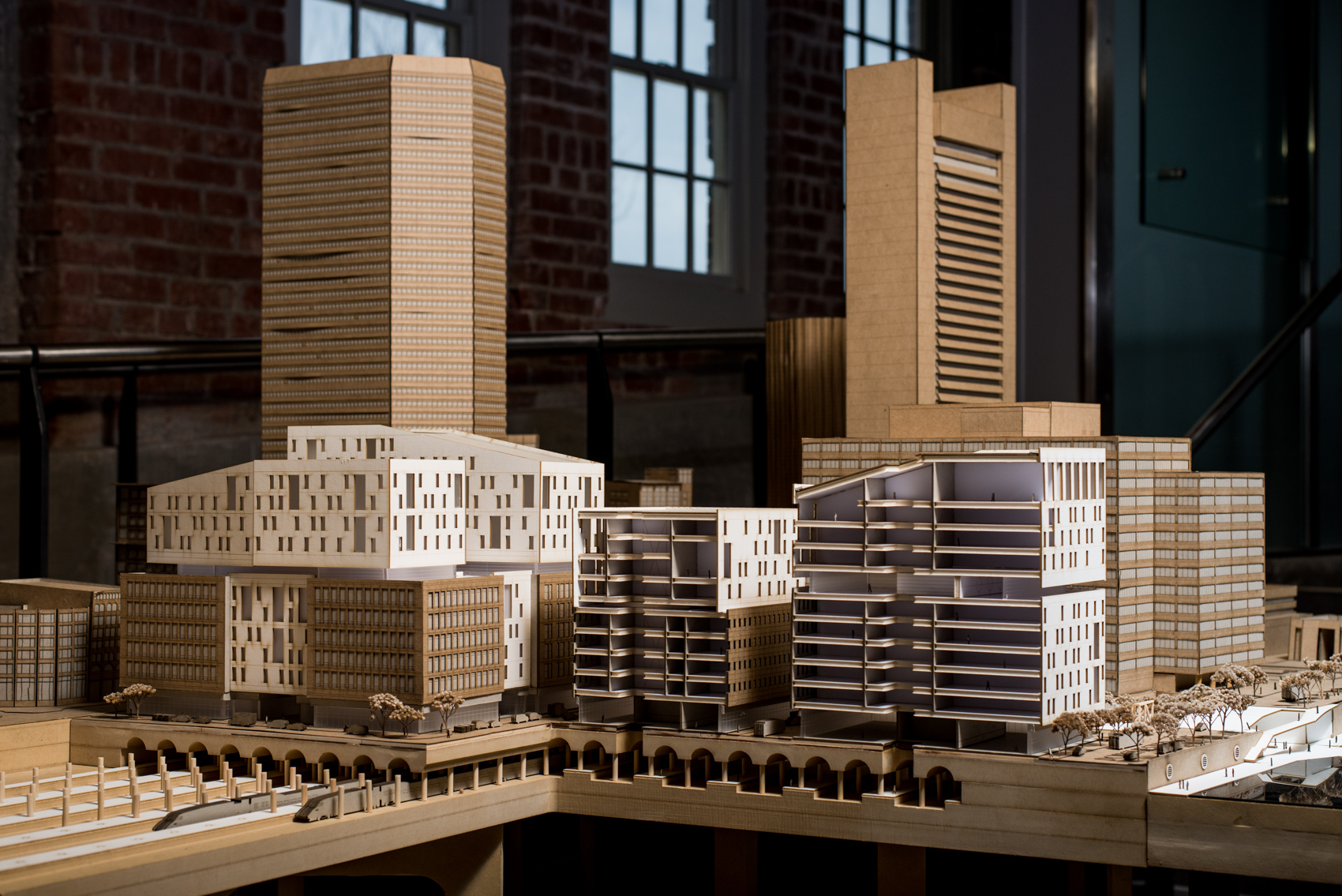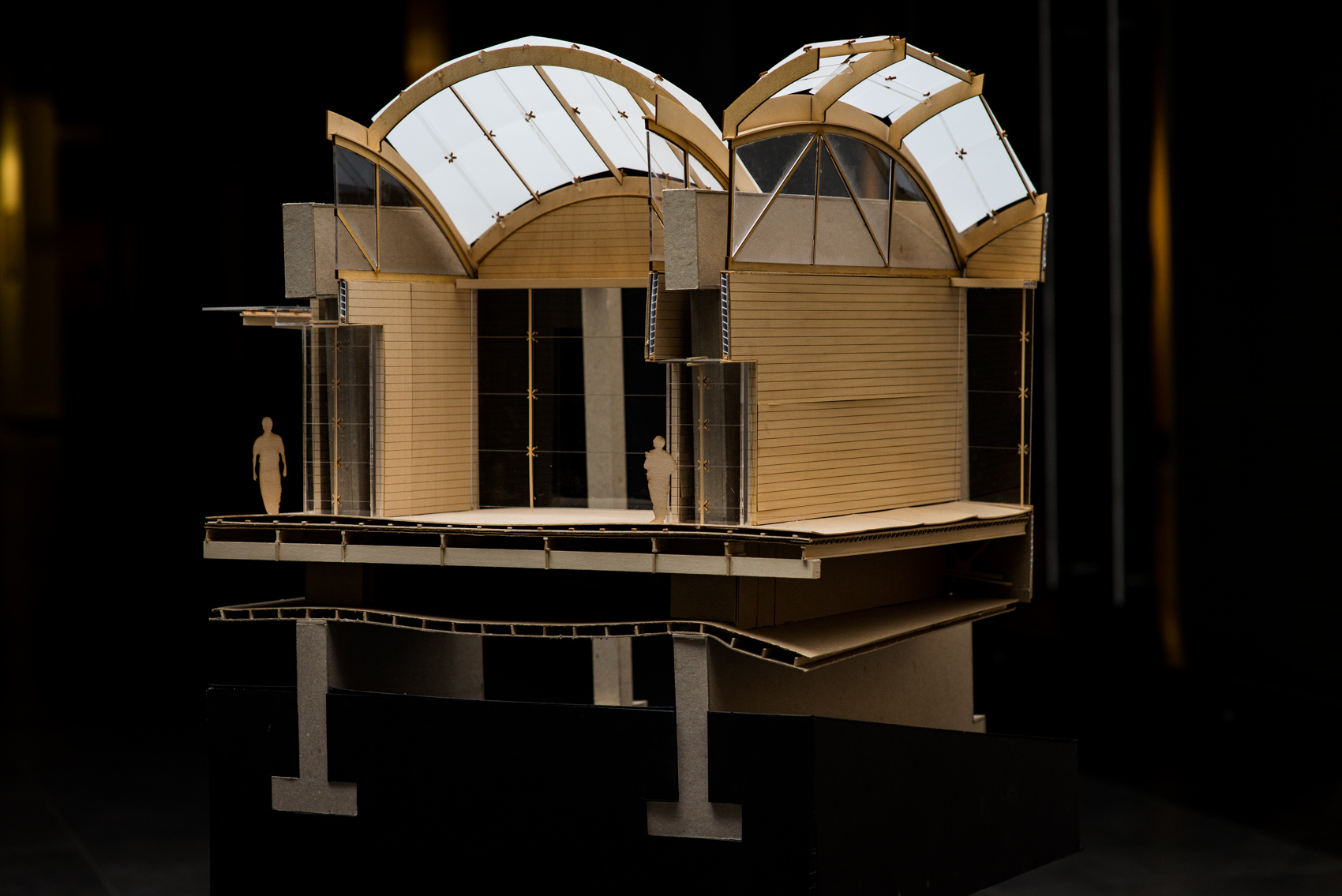I was recently given the challenge of photographing an entire city in less than an hour. Well that's not entirely accurate. In reality I was hired to photograph an architectural model of Boston, created by a group of senior architecture students at Oklahoma State University.
The project required me to consider how I would light such a subject. I chose to light the model primarily by bouncing flash to a small wooden dropdown ceiling above the model. The surrounding ceiling was dark/black. This actually worked to my favor. The small dropdown ceiling allowed the bounced light to be focused on the model while keeping surrounding elements dark. The ceiling was a large enough light source that it didn't create overly harsh shadows, or highlights, and effectively mimicked natural sunlight depending on flash placement. The color-cast of the wooden ceiling was a concern, but actually worked to my advantage when the cast could be corrected for in post, and the color actually served to mimic the look of golden-hour sunlight cast upon the model. Direct flash would've created very directional harsh lighting, and flashing through a shoot through or reflective umbrella may have required a lot more power, and probably would not have spread the light as evenly as the comparatively large dropdown ceiling served to do.
Another challenge was how to effectively convey the model. This required wide, mid, and extremely closeup perspectives. The model was extremely detailed centering around a reimagined city square designed by the students. The closeups were meant to illustrate actual use of the square from an almost on-the-street perspective. The model included hundreds of miniature figurines representing humans and vehicles, milling about, and interacting with the city. Imagine miniature street photography (many of the photographs actually mimic the look of tilt-shift lens street photography). Funny enough, some of the pictures took on a look close to that of Google Street View. I must say it was semi-terrifying having to maneuver a large camera millimeters away from a fragile object, that which required probably hundreds of man-hours to design and construct.
I ended up taking several hundred pictures of the model. Along the way moving lights, changing lenses, and trying every perspective I could imagine. All of this in order to fully capture its most intricate details. I try to be a more selective photographer, but given the complexity of the model I wanted to ensure I captured it from every possible angle, so as to both give credit to, and satisfy its creators.
Overall it was a really fun assignment. I love a good challenge when in comes to photography, so when it came to this one I was all in.
Check out the results below. Also check out the portfolio website from one of the model's creators at evanmcquillen.com.
